HubSpot is an all-in-one inbound marketing software tool that can allow you to optimize your WordPress website for lead generation and conversion. Site owners use HubSpot to improve traffic generation, lead capture, automated nurturing and sales conversion and with $375.6 million in revenue for 2017, HubSpot has cemented themselves as a force to be reckoned with in this space.
HubSpot does bundle its own content management system (CMS), but many marketers don’t realize that a HubSpot WordPress integration is possible via a plugin that gives you an easy way to continue using WordPress as your CMS while integrating HubSpot into your site for your inbound marketing efforts.
In this article, we’re going to walk you through:
- Why you should consider using HubSpot with WordPress
- How to install the WordPress plugin
- Using HubSpot to improve your WordPress SEO
- Using HubSpot to generate and track leads on your WordPress site
- How to implement
By the end, you’ll have a firm grasp of how to leverage both the marketing power of HubSpot and the flexibility of WordPress.
Let’s dive in.
Why HubSpot and WordPress?
One of the things we love about WordPress is the huge amount of flexibility it offers. With thousands of open-source plugins, there’s not much you can’t do.
But in some particular situations, it can be helpful to have everything neatly tied together, with all your data in a centralized location. HubSpot does that for inbound marketers.
HubSpot’s inbound marketing framework can help you create a WordPress website that sees more traffic, by attracting more visitors, converting those visitors into leads, turning those leads into customers, and turning those customers into promoters of your brand.
There are certainly plugins that can help you do each of these things, but your data will be scattered across a variety of platforms. With HubSpot, you can have everything you need to run powerful inbound marketing campaigns in a single location.
We’ve had several clients use the HubSpot and WordPress integration plugin, and they have seen tremendous results from connecting their website with their inbound marketing software.
Some of the results include:
- 4x increase in website traffic
- 2x increase in organic website traffic
- 228% increase in social media website traffic
- 140% increase in referral website traffic
- 47% increase in view to lead rate
- 38% increase in landing page conversions
Obviously, HubSpot has some powerful tools that can be incredibly helpful if you’re an inbound marketer.
Now, let’s walk through some simple ways you can use HubSpot to supercharge your WordPress site.
Step #1: Install The HubSpot WordPress Plugin
From your WordPress dashboard, install the official HubSpot plugin (which has over 30,000 active installs and comes with support from the HubSpot team). Note: you’ll need a HubSpot account for the plugin to work properly.
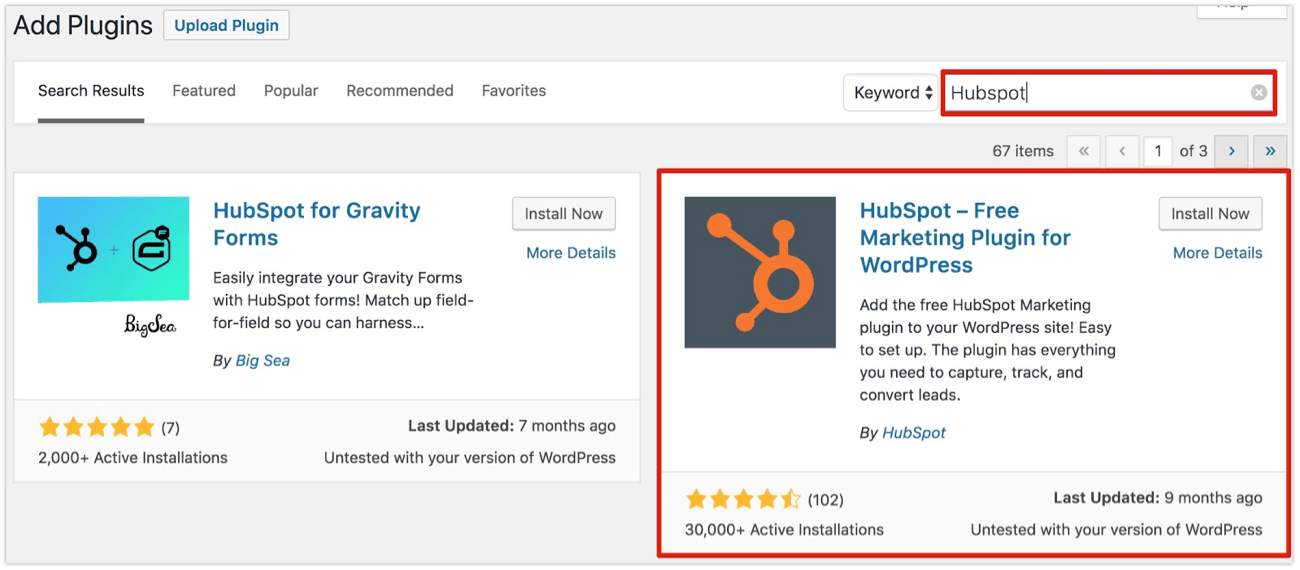
Once the plugin is installed, it will begin pulling the data from your WordPress site into your HubSpot account.
Step #2: Use HubSpot to Improve Your WordPress SEO
HubSpot offers powerful SEO tools for your WordPress site.
Keywords
Obviously, you want to rank your content for the keywords that are most important to your business. Using the HubSpot keywords tool, you can identify which keywords you’re already ranking for, as well as get suggestions for additional keywords.
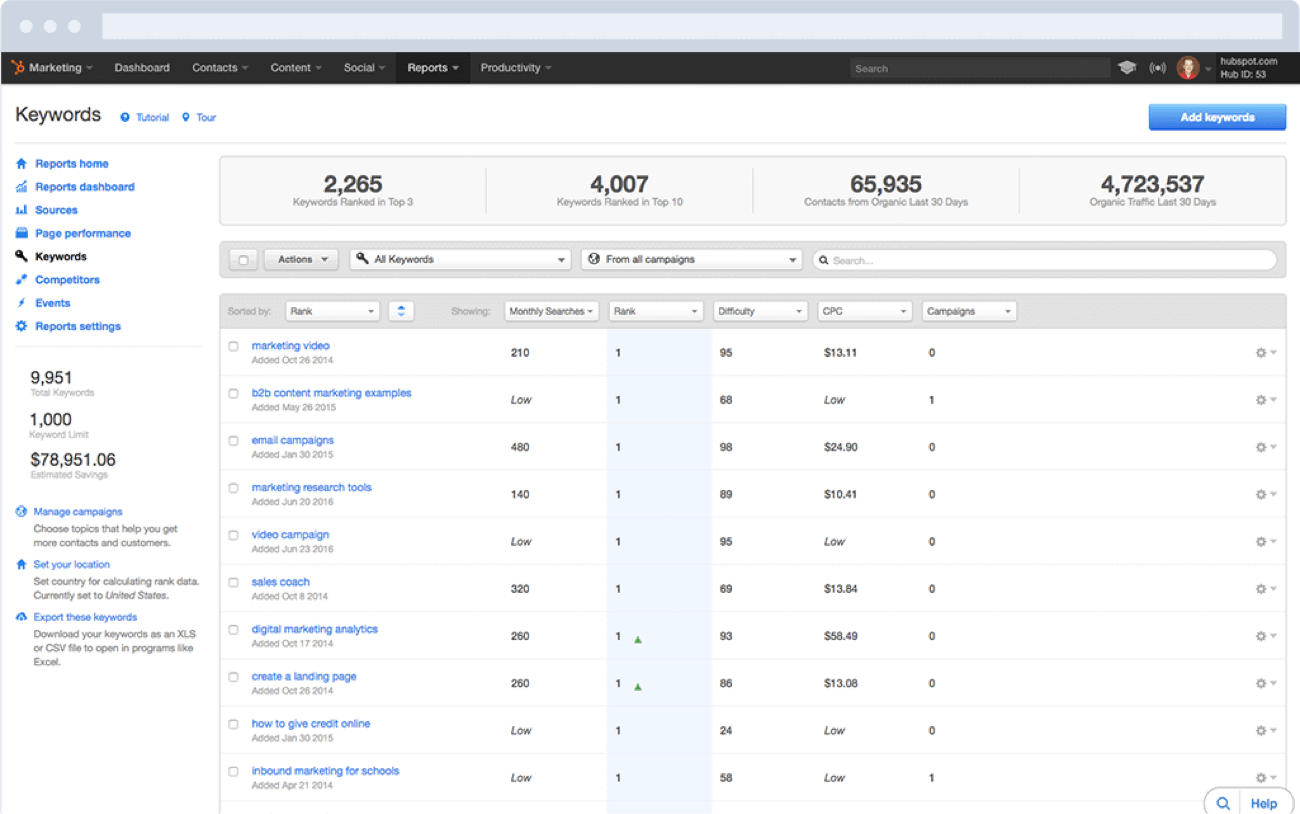
In addition to showing standard metrics like monthly volume, keyword difficulty, and approximate CPC, HubSpot also shows specific marketing metrics, such as the number of leads generated by organic search traffic.
This data is incredibly helpful in that it allows you to get a sense of how effective your SEO efforts are in generating not only traffic, but actual leads.
If you’re struggling to figure out what keywords you should target, the suggested keywords tool allows you to type in a single keyword or a URL and then get a list of possible keywords.
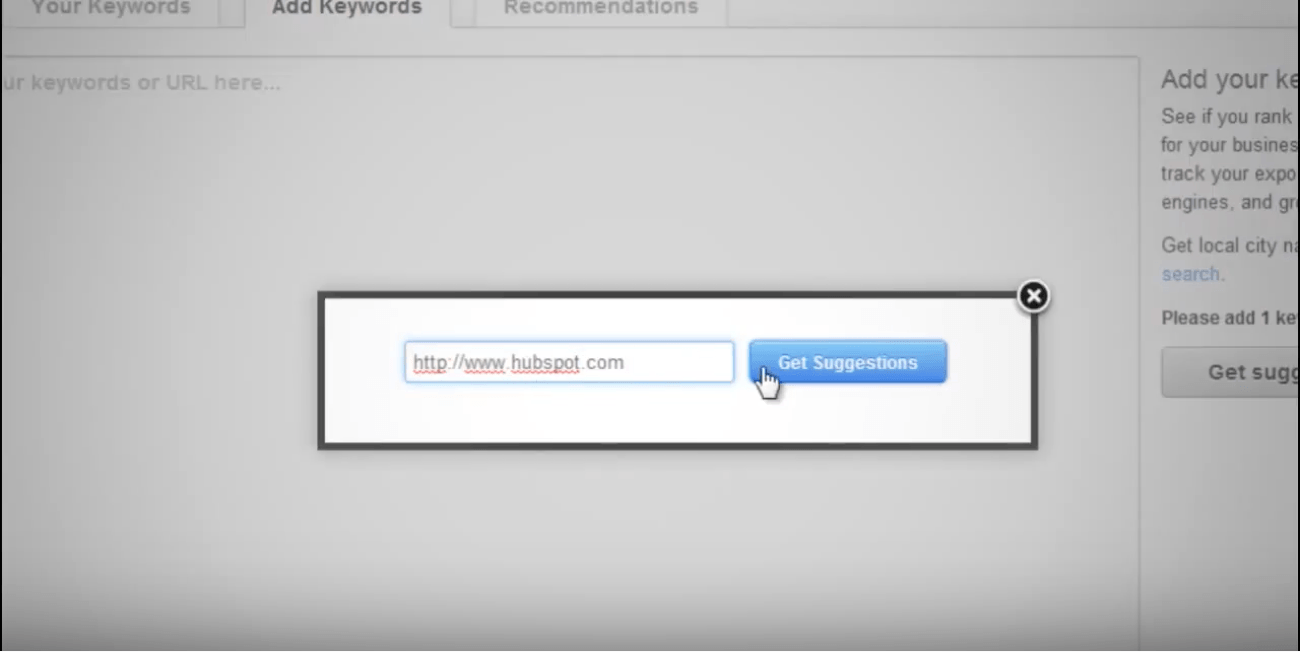
The URL function can be particularly helpful if you’re trying to compare organic content from a competitor. Simply type in their URL, see what keywords come up, and then determine if you should develop content around any of those keywords.
Finally, under the recommendations tab, HubSpot will show you low difficulty keywords that you’re already ranking on pages 2-10. With just a little work, you can probably move these pages onto the first page of Google.
On-Page SEO
HubSpot’s on-page SEO optimization recommendations can help you improve SEO and the rankings of existing content.
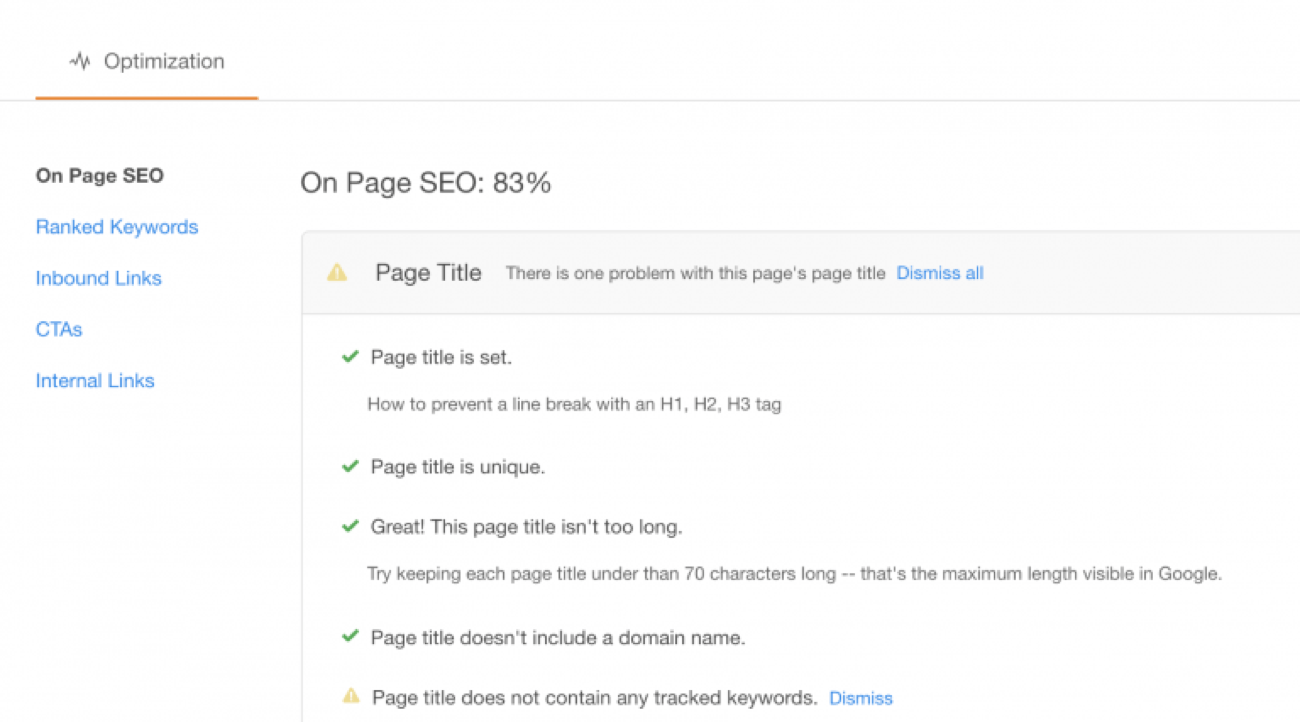
If you’re trying to move a piece of content to the first page of Google, following these recommendations is a must. Granted, there’s more to SEO than optimization, but it’s certainly a good starting point.
Step #3: Use HubSpot To Generate And Track Leads
HubSpot makes it really simple to place lead generation forms in strategic places throughout your WordPress website, and then A/B test those CTAs to see which perform the best.
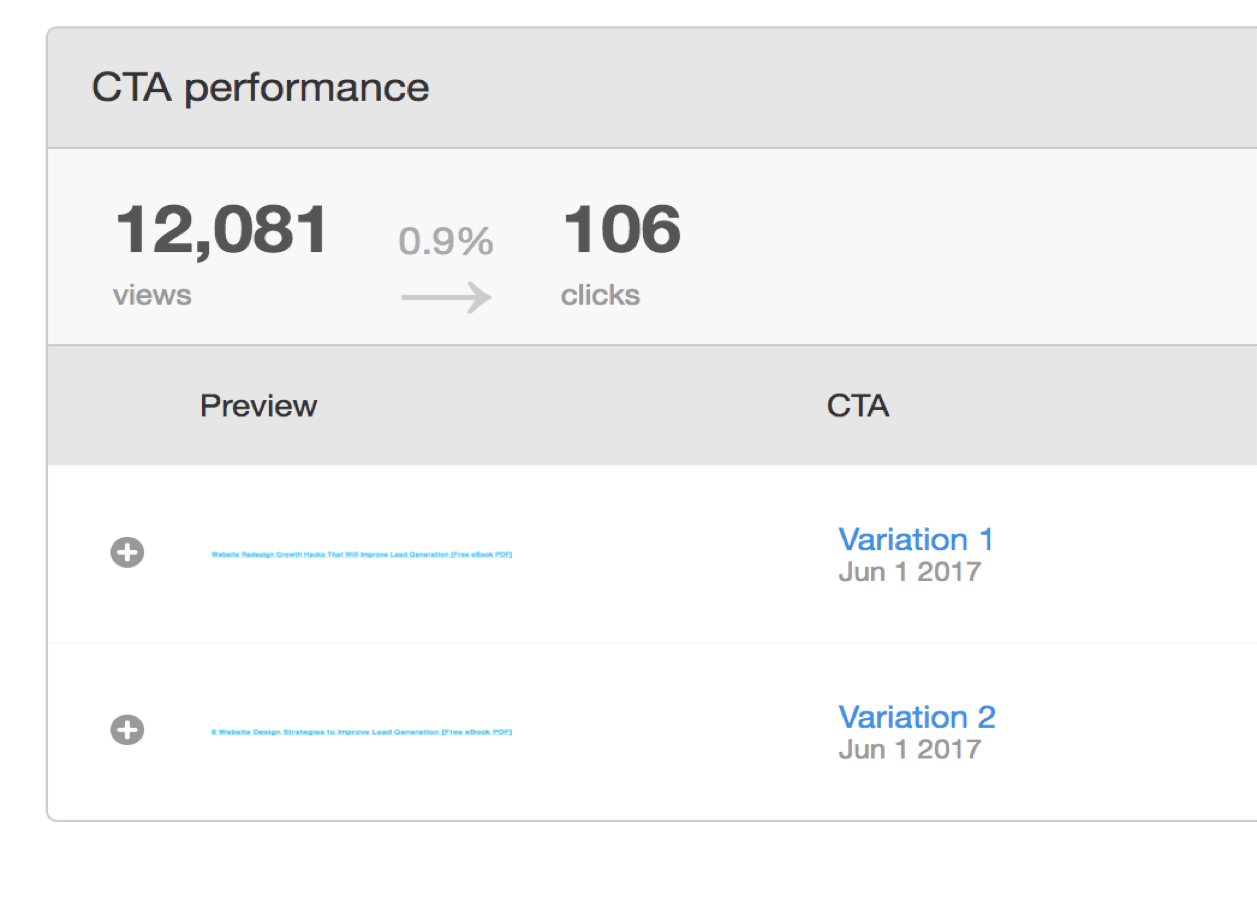
By implementing lead gen forms throughout your site and tracking their performance, you can begin moving prospects through your funnel.
One simple A/B test to consider implementing is testing content upgrades versus popups. A content upgrade is a lead gen form embedded within a piece of content that gives readers access to exclusive additional resources.
For example, if you have a list of the 10 best WordPress optimization tips, you could give readers a massively expanded version of that list as a PDF download in exchange for their email.
Test this type of lead gen form versus standard popup email capture forms and see which one works best. With HubSpot, you’ll have detailed analytics that will tell you everything you need to know.
Tracking Leads
Once you’ve captured a lead, it’s simple to start nurturing that lead through your funnel and tracking their behavior. Within HubSpot, you can create email drip campaigns for your leads and then track how the leads respond. For example, you can determine which pages your leads visit, how they arrived, and where they are in your marketing funnel.

This kind of data allows you to identify the buying intent of particular leads and customize your interactions based on where they sit in your funnel.
Ramping Up with HubSpot on WordPress
Now that you know the power of HubSpot and WordPress, what are your next steps?
- I recommend adding a call-to-action from HubSpot on each page of your WordPress website. Using the plugin, you will be able to easily see which calls-to-action are generating the most clicks and leads.
- Wherever you’re using a WordPress form, replace that with a HubSpot form. You can do this using the embed code from HubSpot. This will allow you to trigger automation and workflows based off of the form submission.
- Set up your email automation in HubSpot based on the above form submissions and conversions on your website. This will allow you to truly maximize the value of the HubSpot and WordPress integration by nurturing your leads as they convert on your website.
- Measure your analytics. With the plugin, you will be able to easily see which channels are not only driving the most visits, but more importantly, the most leads and customers. This is critical to analyzing your inbound marketing strategy daily, weekly and monthly to make sure you’re optimizing your strategy to coincide with your businesses goals.
- Identify low hanging SEO fruit. Determine which pages are already ranking, which ones could rank with a little bit of improvement, and which keywords you could easily rank for. Then optimize and improve existing pages, and create new content that will rank for low difficulty keywords
For one Pagely client, prior to using HubSpot and the WordPress plugin, they were not able to track conversions on their website, get detailed analytics including how people were finding their website and, most importantly, get data on how people converted on calls-to-action.
Using the WordPress plugin in conjunction with HubSpot has allowed them to truly maximize the value of their website to turn it into a lead generation engine. Since the transition, they have seen their website visits increase by an average of 352% over the first 6 months of the transition and leads increase by 124% over the first 6 months.
How to Learn More
You can start learning more by accessing countless tips and tricks and subscribing to HubSpot’s blogs. If you have a WordPress site now, here are some quick integration tips for your HubSpot trial or your new HubSpot platform:
- Track website activity with advanced analytics in HubSpot
- Plug into CTA messaging that works with HubSpot CTA tracking
- Add HubSpot forms to your WordPress site to increase your conversion rate
- Optimize your website content and search engine optimization with HubSpot Page Performance tools
HubSpot also has a completely free Academy and Inbound Marketing Certification that you can take to start to familiarize yourself with the inbound marketing methodology.
HubSpot and WordPress integration can be a powerful tool for your inbound marketing efforts. Please keep in mind that the only way to be truly effective is to have a holistic inbound marketing strategy that covers all facets of the inbound methodology.
Making a strategic decision to start with inbound marketing will help maximize your online marketing efforts by increasing website visitors, lead generation, customers, and happy customers! Inbound marketing empowers marketers to attract visitors, convert leads, close customers and delight promoters.
If you’re using HubSpot with WordPress now, please share your experience and/or questions/issues in the comments section below.
